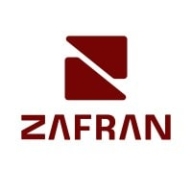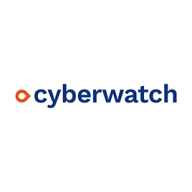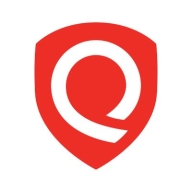


Qualys CyberSecurity Asset Management and Cyberwatch Vulnerability Manager are cybersecurity solutions focused on asset management and vulnerability tracking. Cyberwatch holds an edge in deployment ease and customer service, while Qualys stands out in ROI and pricing.
Features: Qualys CyberSecurity Asset Management delivers a comprehensive asset inventory, seamless integration with cloud environments, and real-time asset visibility. Cyberwatch Vulnerability Manager emphasizes thorough vulnerability identification, streamlined risk assessment, and specialized vulnerability assessment capabilities.
Ease of Deployment and Customer Service: Cyberwatch Vulnerability Manager is known for a straightforward deployment process and excellent customer service with high responsiveness. Qualys, though having a more complex setup, provides robust support once the system is established.
Pricing and ROI: Qualys CyberSecurity Asset Management offers competitive pricing, making it cost-effective for large-scale deployments with significant ROI through efficient asset management. Cyberwatch Vulnerability Manager has higher initial setup costs but provides specialized benefits in vulnerability management.


Zafran Security integrates with existing security tools to identify and mitigate vulnerabilities effectively, proving that most critical vulnerabilities are not exploitable, optimizing threat management.
Zafran Security introduces an innovative operating model for managing security threats and vulnerabilities. By leveraging the threat exposure management platform, it pinpoints and prioritizes exploitable vulnerabilities, reducing risk through immediate remediation. This platform enhances your hybrid cloud security by normalizing vulnerability signals and integrating specific IT context data, such as CVE runtime presence and internet asset reachability, into its analysis. No longer reliant on patch windows, Zafran Security allows you to manage risks actively.
What are the key features of Zafran Security?
What benefits can users expect from Zafran Security?
In industries where security is paramount, such as finance and healthcare, Zafran Security provides invaluable protection by ensuring that only exploitable vulnerabilities are addressed. It allows entities to maintain robust security measures while allocating resources efficiently, fitting seamlessly into existing security strategies.
Cyberwatch Vulnerability Manager provides comprehensive assessments to help organizations address cybersecurity challenges, enhancing security through informed vulnerability management.
Cyberwatch Vulnerability Manager is designed for organizations seeking to improve their cybersecurity posture by identifying, assessing, and mitigating vulnerabilities effectively. It offers robust tools for vulnerability analysis and prioritization, enabling security teams to focus on critical issues first. It combines automated scanning with customizable reporting, providing a clear view of potential threats. Known for its integration capabilities, it fits well with existing security systems, making it versatile in protecting IT landscapes.
What are the key features of Cyberwatch Vulnerability Manager?Cyberwatch Vulnerability Manager is implemented in industries like finance, healthcare, and retail to secure sensitive data and prevent cyber threats. Financial firms utilize its detailed reporting for compliance, while healthcare providers rely on its vulnerability prioritization tools to safeguard patient information and retail businesses appreciate its integration capabilities in maintaining robust security protocols.
Qualys CyberSecurity Asset Management provides advanced real-time asset visibility, dynamic tagging, and External Attack Surface Management. It streamlines asset discovery and management using cloud agents and IP-based scanning, enhancing risk management and software lifecycle tracking.
Qualys CyberSecurity Asset Management offers a comprehensive solution for managing asset inventories and tracking software lifecycle states. It facilitates network visibility and supports zero-day vulnerability solutions, enhancing security posture through efficient monitoring. Users benefit from its cloud-based interface, which provides in-depth asset configurations and insights. Key features include automated vulnerability scanning and unauthorized software management, reducing manual efforts. The platform also emphasizes the importance of timely remediation and ongoing risk mitigation across multiple environments. Despite its strengths, users note the need for enhanced integration with additional CMDBs beyond ServiceNow, as well as cost efficiency improvements. Requests also include better report customization, more scan control, and a simplified UI.
What are the key features of Qualys CyberSecurity Asset Management?In industries like finance, healthcare, and manufacturing, Qualys CyberSecurity Asset Management enhances asset control by offering visibility into hardware and software configurations. It aids in maintaining security compliance and identifying unauthorized software, crucial for sectors with strict regulatory requirements.
We monitor all Vulnerability Management reviews to prevent fraudulent reviews and keep review quality high. We do not post reviews by company employees or direct competitors. We validate each review for authenticity via cross-reference with LinkedIn, and personal follow-up with the reviewer when necessary.